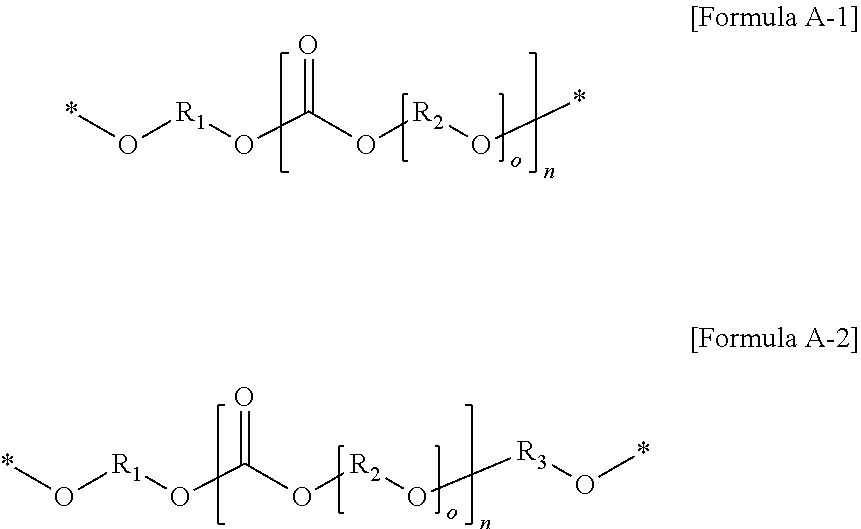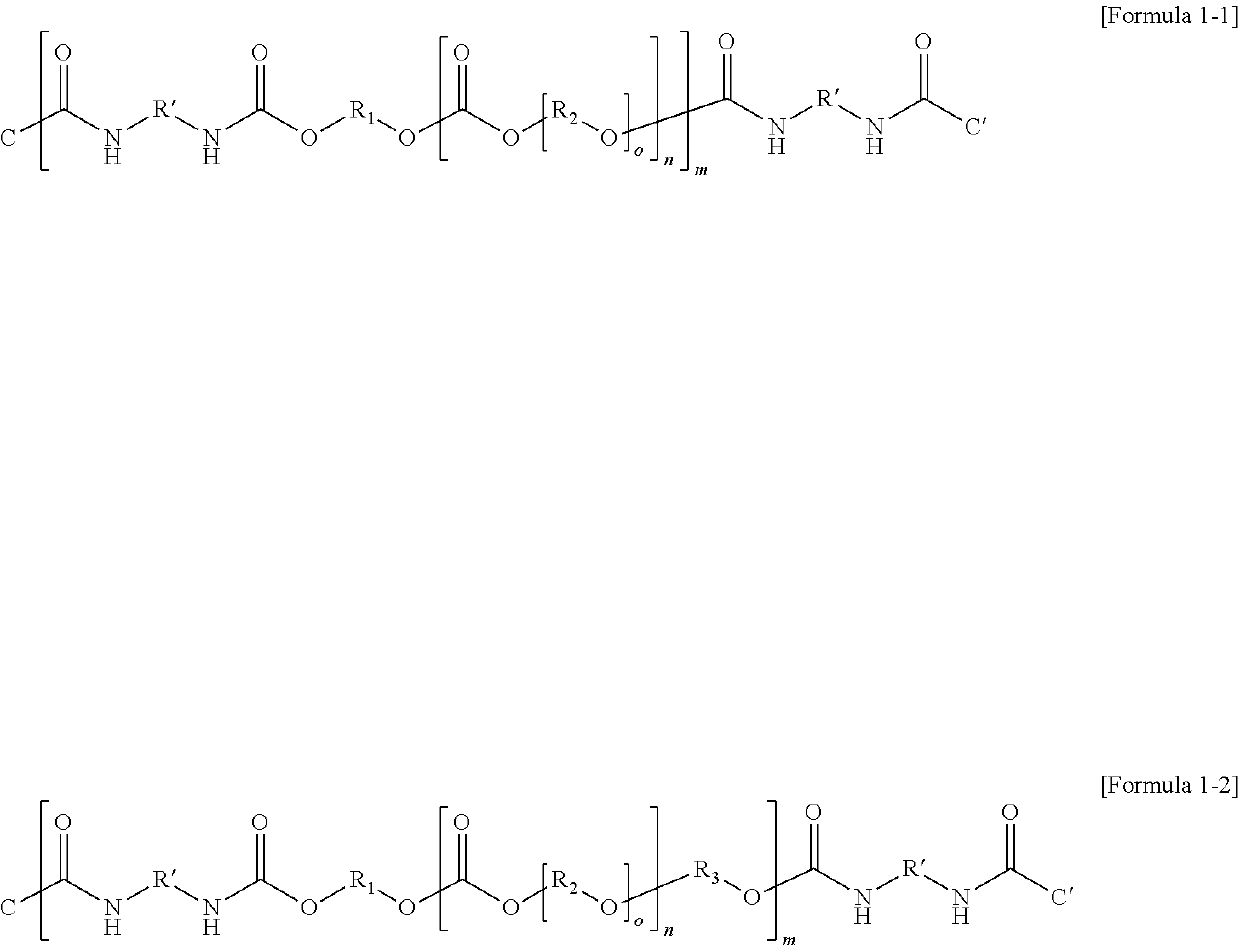Composition for gel polymer electrolyte, and gel polymer electrolyte and lithium secondary battery including the same
- Summary
- Abstract
- Description
- Claims
- Application Information
AI Technical Summary
Benefits of technology
Problems solved by technology
Method used
Image
Examples
example 1
1. Example 1
(1) Preparation of Composition for Gel Polymer Electrolyte
[0141]An electrolyte was prepared by dissolving LiPF6 in a non-aqueous solvent having a weight ratio of ethylene carbonate (EC):propylene carbonate (PC):ethyl methyl carbonate (EMC)=3:2:5 so as to attain 1 M concentration. 5 parts by weight of an oligomer (Formula 1-3, n=10, m=9) was added to 100 parts by weight of the electrolyte. Then, 0.2 parts by weight of a polymerization initiator (2,2′-azobis(iso-butyronitrile, AIBN) and 40 parts by weight of an additive (VC) were added based on 100 parts by weight of the oligomer to prepare a composition for a gel polymer electrolyte.
(2) Manufacture of Lithium Secondary battery
[0142]To a N-methyl-2-pyrrolidone (NMP) solvent, LiCoO2 as a positive electrode active material, carbon black as a conductive agent, and polyvinylidene fluoride (PVdF) as a binder were added in amounts of 96 parts by weight, 2 parts by weight and 2 parts by weight, respectively, to prepare a positive...
example 2
2. Example 2
[0145]A composition for a gel polymer electrolyte and a lithium secondary battery were manufactured by the same method as in Example 1 except for further including 14 parts by weight of hexylacrylate as a monomer with respect to 100 parts by weight of the oligomer.
experimental examples
[0152]Experimental Example 1. Evaluation of Battery Resistance
[0153]In order to evaluate the resistance of the lithium secondary batteries manufactured according to Examples 1-2 and Comparative Examples 1-2, the lithium secondary batteries thus manufactured were activated, charged to a state of charge (SOC) of 50%, and discharged at conditions of 25 C for 10 seconds, and then, resistance was measured. The results are listed in Table 1 below.
TABLE 1Resistance (mΩ)Example 120Example 221Comparative Example 115Comparative Example 240
[0154]Different from the Examples, Comparative Example 1 used a liquid electrolyte, and the resistance was relatively low. However, referring to the experiments below, adhesion to an electrode and the capacity retention of a battery were found low. Meanwhile, Comparative Example 2 using the same kind of a gel polymer electrolyte was found to have high resistance when compared with the Examples.
PUM
 Login to View More
Login to View More Abstract
Description
Claims
Application Information
 Login to View More
Login to View More - R&D
- Intellectual Property
- Life Sciences
- Materials
- Tech Scout
- Unparalleled Data Quality
- Higher Quality Content
- 60% Fewer Hallucinations
Browse by: Latest US Patents, China's latest patents, Technical Efficacy Thesaurus, Application Domain, Technology Topic, Popular Technical Reports.
© 2025 PatSnap. All rights reserved.Legal|Privacy policy|Modern Slavery Act Transparency Statement|Sitemap|About US| Contact US: help@patsnap.com



